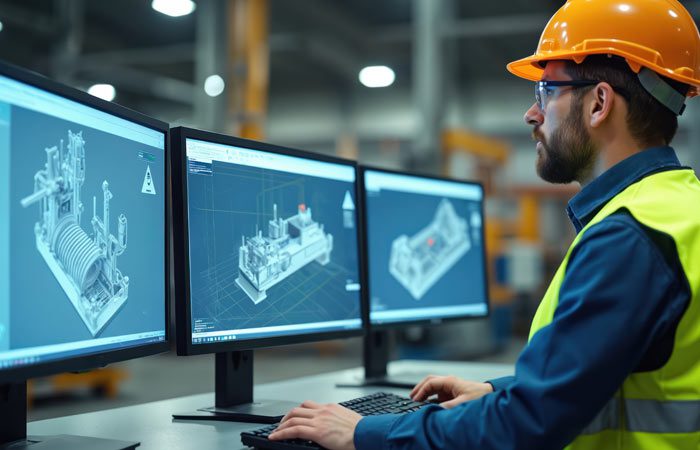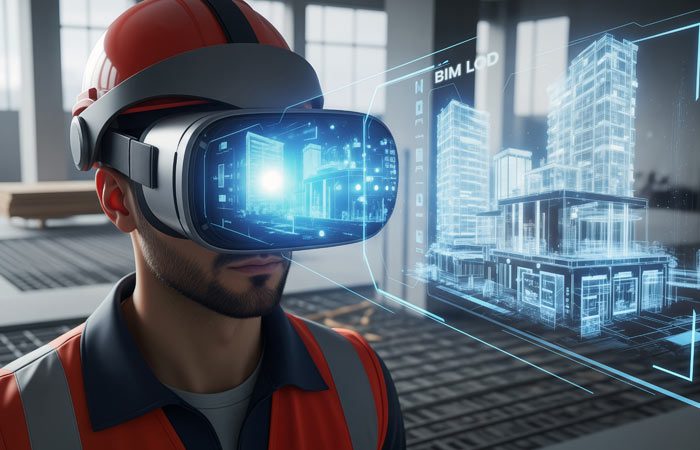
Engineering for Net Zero: How European Plants Can Align with CSRD and EED Through Smarter Design
It’s no longer a surprise to anyone in the industrial world: Europe is serious about climate targets.
And it’s not just about ambitious pledges anymore — it’s about binding frameworks with teeth, backed by accountability, fines, and very real pressure from investors and regulators. Whether you’re building a greenfield facility in Central Europe or retrofitting an aging plant in France, sustainability is no longer just a nice-to-have. It’s a requirement. It’s measurable. And it’s enforceable.
The Corporate Sustainability Reporting Directive (CSRD) and the Energy Efficiency Directive (EED) aren’t just compliance checklists. They are architecture-defining mandates that will shape how plants are designed, operated, and modernized for the next two decades.
And here’s the real shift: this is no longer just the ESG team’s concern. This is an engineering challenge.
What Net Zero Really Means for Engineers
For years, “net zero” sat quietly in the corner of sustainability reports — aspirational, hard to define, and often disconnected from day-to-day engineering work. That’s changing fast.
Net zero in the European industrial context now has teeth. Under CSRD, large and listed companies must report audited, standardized emissions data and outline their transition plans — including Scope 1, 2, and material Scope 3 emissions. And the revised EED mandates specific energy efficiency obligations, regular audits, and tangible performance improvements.
For plant engineers, this isn’t a paperwork issue. This is about:
- Reworking process designs to reduce energy demand
- Designing systems that support real-time monitoring and optimization
- Integrating renewable energy at the facility level
- Making choices today that impact carbon reporting tomorrow
Smarter Design is the Bridge Between Compliance and Competitiveness
Let’s be honest: for many plants, compliance feels like a cost. A burden. A list of new rules that slow things down and tighten budgets.
But the companies that are thriving under CSRD and EED aren’t just ticking boxes. They’re using the pressure to build more resilient, more profitable, and more future-ready facilities.
Because the same design strategies that align you with sustainability laws also:
- Lower long-term OpEx
- Improve uptime and system performance
- Enhance brand reputation
- Open up access to green financing and public procurement contracts
Here’s how smarter engineering can make it happen.
- Start With Energy at the Core — Not After the Fact
In far too many projects, energy efficiency is an afterthought. Something added on after layouts are finalized and equipment is ordered.
Under the EED, that won’t fly. Energy audits must now be regular, rigorous, and include life-cycle costing and efficiency recommendations — not just walkarounds and reports. But instead of fearing audits, smart companies are engineering to exceed them.
This starts with early integration of:
- Dynamic energy simulations for lighting, HVAC, and process systems
- Process flow optimization to reduce thermal losses and idle time
- Efficient motor and pump selection tied to real load curves
- Automation systems that allow real-time consumption visibility
- Embrace Low-Carbon Materials and Modular Construction
Net-zero isn’t just about what happens once the plant is running. It’s about the entire embodied carbon footprint — including construction, materials, and waste.
Under CSRD, these lifecycle emissions are increasingly under the microscope. Engineering teams must now look at:
- Sourcing materials with EPDs (Environmental Product Declarations)
- Using prefabricated systems to reduce waste and site energy
- Reusing or recycling process infrastructure during upgrades
- Designing for disassembly, not just installation
- Design for Monitoring, Reporting, and Improvement
One of the biggest pain points under CSRD is not emissions reduction — it’s data collection.
You can’t manage what you can’t measure, and most legacy plants don’t have the visibility to track real-time energy use, emissions, or anomalies. That’s where smarter design makes all the difference.
Forward-thinking engineering teams are now integrating:
- Smart meters and IoT sensors directly into plant infrastructure
- Energy Management Systems (EMS) built for CSRD-grade reporting
- Dashboards for continuous monitoring of Scope 1 and 2 metrics
- Data interoperability standards for future ESG and compliance platforms
This isn’t just about compliance — it’s about control. Plants that can see their consumption in real time can respond faster, optimize better, and prove improvements without third-party guesswork.
- Prioritize Electrification and Renewable Integration
Europe is electrifying — fast. And plant design must support that transition.
Whether it’s replacing gas-fired systems with heat pumps, shifting to electric boilers, or integrating solar and battery storage, these transitions must be engineered into the backbone of the facility.
That means:
- Designing space and connections for PV and inverters
- Planning for bi-directional EV charging or microgrid readiness
- Selecting equipment with electric-drive capability
- Understanding grid compatibility and stability requirements
- Reframe Sustainability as a Core Engineering Metric
Traditionally, design optimization focused on cost, time, and quality. But in the CSRD era, sustainability is now the fourth pillar of engineering success — measurable, reportable, and audited.
That means engineering teams must build sustainability KPIs into their design process:
- kgCO₂e per ton of output
- Energy intensity per m²
- Water reuse percentage
- Waste-to-landfill ratio
These metrics should be visible during design reviews, tracked during commissioning, and fed into CSRD reporting systems. And they’re often the deciding factor for green loans, investor evaluations, or long-term procurement contracts.
How TAAL Tech Supports Net-Zero Engineering
At TAAL Tech, we don’t see CSRD or EED as obstacles — we see them as opportunities to build smarter, leaner, and more compliant plants.
Across Europe, we support clients by:
- Embedding sustainability engineers into project teams from Day 1
- Using energy modeling, CFD, and digital twins to validate low-carbon designs
- Integrating smart metering, EMS, and reporting tools for CSRD readiness
- Supporting material selection, prefab strategy, and modular plant design
- Providing ongoing audit support and retrofit planning for older facilities
Whether it’s a new line in Poland, an HVAC upgrade in France, or a decarbonization roadmap in Italy, our focus is on designing for performance, compliance, and measurable impact.
Final Thoughts: Compliance is Temporary. Smart Engineering Lasts.
European regulations will evolve. Audits will change. Targets will tighten.
But smart design decisions made today — the ones that lower energy use, reduce emissions, and future-proof your plant — will pay off long after the reporting requirements have shifted.
The best engineering isn’t reactive. It’s strategic. It looks at regulations not as burdens, but as catalysts for better, cleaner, and more intelligent facilities.
And that’s what net-zero engineering really is: not a constraint — a competitive edge.


